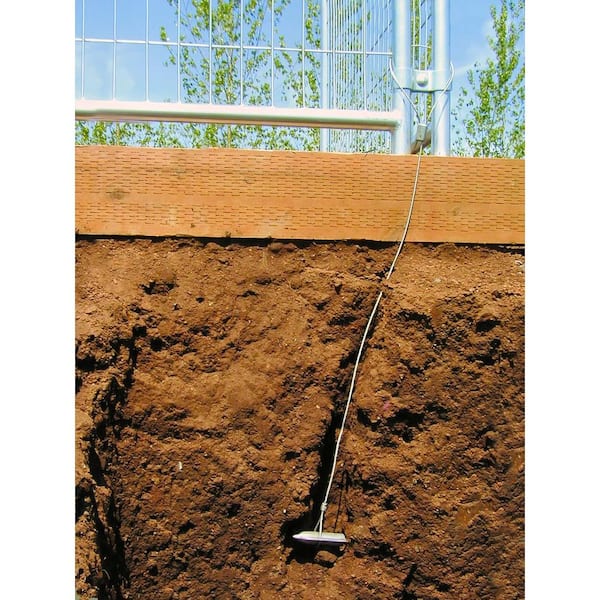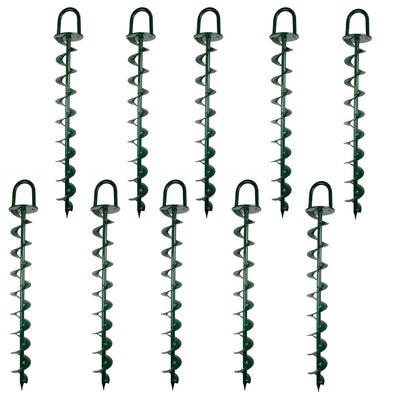Key Features to Check When Buying a Strong Ground Anchor
Key Features to Check When Buying a Strong Ground Anchor
Blog Article
Explore the Various Sorts Of Ground Anchor for Your Following Task
When starting a building or landscape design task, understanding the different kinds of ground anchors offered is crucial to ensuring both stability and sturdiness (Ground Anchor). From auger anchors, which stand out in diverse dirt problems, to risk supports made for momentary installments, the options are countless. In addition, concrete and screw supports existing one-of-a-kind benefits in details scenarios, while deadman anchors are tailored for applications requiring resistance to lateral forces. The selection of an ideal support kind can dramatically affect the overall success of your project, prompting further expedition right into their respective advantages and applications.

Auger Anchors
Auger anchors are a popular option in various building and construction and landscape design projects due to their unique layout and reliable securing capacities. These anchors contain a helical screw-like shaft that is driven into the ground, enabling a secure and protected hold. The spiral design assists in simple installment and makes the most of resistance against lateral pressures, making auger supports specifically effective in applications such as fencing, momentary frameworks, and erosion control.
The installation procedure of auger supports is reasonably uncomplicated. They can be by hand or mechanically installed, relying on the size and required depth. This adaptability enables for their usage in varied dirt problems, from sandy to clayey terrains. Moreover, auger anchors can be conveniently removed and recycled, which contributes to their cost-effectiveness and sustainability.
One of the substantial advantages of auger anchors is their capability to disperse loads uniformly across the bordering soil, decreasing the danger of soil disturbance and decreasing ecological effect. In addition, they are much less susceptible to heaving or loosening in time contrasted to standard securing methods. Subsequently, auger anchors are an excellent selection for projects calling for reputable and resilient anchoring remedies.

Stake Anchors
When it pertains to protecting frameworks in a range of outside applications, stake supports use a simple and reliable solution. These supports are usually built from durable products such as steel or aluminum, designed to stand up to ecological tensions while giving optimal security. Their easy layout permits fast installment, making them an excellent selection for short-term or irreversible anchoring demands.
Stake anchors are specifically valuable in securing camping tents, covers, and various other lightweight structures against wind and weather condition. They work by being driven into the ground at an angle, developing a solid hold that withstands pull-out pressures - Ground Anchor. The efficiency of risk supports depends upon numerous elements, consisting of soil kind, dampness material, and the angle of installment
For included safety and security, many risk anchors include accessory points for ropes or bands, enabling tension modifications as essential. In applications such as landscaping or building, they can properly stabilize devices or frameworks on irregular terrain. In general, stake supports offer a versatile and economical solution for safeguarding different outdoor installments, making them a favored choice for specialists and DIY enthusiasts alike.
Concrete Anchors
Concrete supports provide a robust remedy for protecting frameworks to concrete surface areas, ensuring security and safety and security in different applications. These supports are necessary for jobs find out this here ranging from domestic building and constructions to large industrial setups. They are available in various types, consisting of development supports, adhesive anchors, and undercut anchors, each made for particular load demands and ecological conditions.
Glue anchors use high-strength epoxy or material to bond the anchor to the concrete, providing premium load-bearing abilities, especially in split concrete circumstances. Undercut anchors create a distinct shape within the concrete, providing extraordinary holding power, especially in applications where tensile loads are prevalent.
When carried out properly, concrete supports significantly improve the architectural honesty of various jobs, making them indispensable in modern construction techniques. Recognizing the certain needs of your task will assist in picking the right type of concrete support for the task.
Screw Anchors

Screw supports are a functional attaching option that can be successfully utilized in a selection of applications where conventional concrete anchors may not suffice. These supports include a helical design that permits them to be quickly driven into the ground, making them optimal for usage in dirt and various other substrates. Their distinct framework provides superb holding power and resistance to pull-out pressures, making them appropriate for many projects, from landscape design to architectural assistance.
Among the primary benefits of screw anchors is their convenience of setup. They require minimal devices and wikipedia reference can often be installed without the demand for excavation, which saves both time and labor prices. In addition, screw supports can be removed and recycled, using a sustainable remedy for temporary applications.
Screw supports are specifically helpful in areas where soil conditions are challenging, such as sandy or loose Learn More soils. Their capacity to be set up at varying midsts enables personalization based upon certain task needs. In general, screw supports provide a trusted and efficient anchoring method, making them an excellent option for service providers and designers looking for reliable services for their jobs.
Deadman Anchors
Deadman anchors serve as a robust solution for supporting structures in tough conditions, particularly where standard anchoring methods might fail. These anchors include big, hefty items buried underground, which produce resistance versus side pressures. The design usually includes a horizontal component, such as a block of concrete or a metal plate, buried in the soil, to which cords or bands are connected.
The effectiveness of deadman supports lies in their capability to disperse tons over a bigger area, reducing the risk of failing in unstable dirt conditions. They are especially beneficial in applications such as maintaining walls, momentary structures, and slope stabilization, where dirt movement can jeopardize the honesty of the structure.
Setup of deadman supports requires careful planning to guarantee they are positioned at the correct depth and positioning, optimizing their load-bearing capability. While they may call for even more labor and product than lightweight anchors, their integrity in unfavorable problems makes them indispensable for lasting tasks. Deadman supports are functional and can be adjusted to numerous applications, making them a best option for designers encountering one-of-a-kind obstacles in their tasks.
Final Thought
Auger anchors excel in diverse soil conditions, while risk supports suit momentary applications. For concrete surfaces, growth and glue anchors give dependable alternatives, and screw anchors offer adaptability in challenging surfaces.
Additionally, concrete and screw anchors present unique advantages in specific situations, while deadman supports are customized for applications needing resistance to lateral pressures - Ground Anchor.Auger anchors are a preferred option in numerous building and construction and landscaping tasks due to their unique design and effective securing abilities. They come in various types, consisting of growth supports, adhesive anchors, and undercut supports, each made for certain tons demands and environmental problems
Adhesive anchors make use of high-strength epoxy or resin to bond the support to the concrete, providing exceptional load-bearing abilities, particularly in split concrete situations. In general, screw anchors give a reputable and effective securing technique, making them an outstanding choice for designers and professionals seeking efficient solutions for their projects.
Report this page